Pros and cons of finishing
If we are talking about wooden lining, then the first advantage is environmental friendliness... Wood breathes and allows you to maintain an ideal microclimate in the bathroom.
The second plus is low cost... Cladding a bathroom with clapboard will cost much less than tiles, porcelain stoneware or vinyl tiles.
Dignity # 3: ease of installation... You don't have to level the walls and even remove old paint... Wood and plastic lining is mounted on a box, which greatly simplifies the process.
Pictured gray bathroom in the attic
The disadvantages of wooden lining include its complex processing - the tree itself is not protected from water and requires careful preparation before using in rooms with high humidity.
Minus plastic lining in its inexpensive appearance and fragility: Accidental impact may break through the wall.
The last drawback is common - due to mounting on a metal profile, the bathroom will become smaller at least 3 cm on each side. In addition, in the interior of the structure, if the wall processing technology is violated, a fungus often forms.
In the photo there is a natural tree in the bathroom
What types can I use?
The meaning itself primarily refers to the classic wooden lining, but plastic panels are also used in the bathroom decoration. What is the difference between them?
Plastic
The design of the plastic lining resembles PVC panels, but different in size. The thickness of one strip is 10 mm, the width is 100 mm, and the length is on average 3000 mm. The system of fastening in the groove allows you to reliably fit the parts to each other and fasten.
Advantages of PVC lining:
- Low price. The cost of one strip 10 * 300 cm varies within 50 rubles.
- Availability. Sold in all departments with plastic panels.
- A light weight. Unlike heavy boxes with tiles, anyone can handle transportation.
- Waterproof. Suitable even for finishing showers, it is not afraid of water and moisture.
- Easy handling. It is cut with an ordinary office knife, does not require grinding, varnish, stain and other coatings.
Wooden
Wooden lining - natural boards with cut grooves and counter spikes. There are different types and sizes:
- Classic. Width - 96 mm, thickness - 12.5 mm.
- Soft-line. 118 * 14 mm.
- Calm. 138 * 15 mm.
These are only approximate values, they may differ from manufacturer to manufacturer.
The advantages of wood wall decoration:
- Natural wood fills any room, including the bathroom, with warmth and comfort. It can be painted in any color or left in a natural shade.
- The finishing material provides excellent heat and sound insulation.
- Thanks to the wide assortment, it is easy to find bathroom clapboard in a matter of hours.
The complexity of finishing a bathroom with clapboard made of wood lies only in its preliminary processing. The process starts with an antiseptic: it prevents rotting, mold and mildew. Then there are options: moisture resistant paint, varnish or special wax.
- Staining will allow you to change the color so that the bathroom finish does not argue with the design of the entire apartment.
- Varnishing protects the surface while maintaining a beautiful texture.
- Wax is used only if the tree is far from the water - for example, if the walls in the wet area are covered with tiles, and the part near the toilet or washing machine is finished with clapboard.
Bathroom Applications
Lining in the bathroom is used on both vertical and horizontal surfaces. Some use it as the main material, others combine it with paint, tiles and even wallpaper.
Walls
Lining on the bathroom wall is a classic way to use it. Reiki can be run both vertically and horizontally - the second option looks more classic and even European.
When creating a crate on the walls, it is worth considering in advance what and where will be located - this is necessary for mortgages, which will be screwed on in the future mirrors, cabinets, shelves and other elements of the bathroom interior.
Plank walls are easy to maintain, aesthetic and quick to assemble. The only caveat is the corners. For plastic, special corner or straight starting profiles are sold, and the joints of the wooden one will have to be closed with special corners or strips.
In the photo, a combination of 3 materials in the interior
Ceiling
Lining ceiling in the bathroom is a great alternative tension or mounted version. Installation is also carried out on a frame that allows you to hide the wiring and install recessed lamps around the perimeter of the bathroom.
Although during operation, the ceiling will not have to withstand the same loads as the walls, but the room is still wet - therefore, be sure to process the wood before starting work.
Pictured is a wooden ceiling in the bathroom
Partial finishing
In bathroom renovation, it is not necessary to use only one material: a combination of two or even three options is permissible. For example, lining plus wallpaper, paint, tiles, porcelain stoneware, plaster. It happens that tiles are laid over the bathroom, and in the rest of the room, lining is left from below, and vinyl wallpaper is glued or painted on top.
Partial finishing is also used for zoning: for example, dividing the toilet and bathroom area in combined bathrooms.
Step-by-step instruction
For work you will need:
- pencil and tape measure;
- level;
- square;
- scissors for metal or a hacksaw (depending on the material);
- screwdriver or hammer.
We have already mentioned that the lining in the bathroom is installed on the crate. To create it, a metal profile or a wooden beam is used, approximately 20 * 30 mm thick. Do not forget about fastenings: it is convenient to fasten wood to wood with self-tapping screws, to concrete or brick - with dowels.
Important! The processing requirement is relevant for both the lining and the wood for the frame. Hereinafter, all steps are indicated taking into account the materials already prepared.
- Primer... Before installing anything on the wall, it should be prepared: the solution will protect the surface from the formation of mold and mildew.
- Markup... Using a pencil, a level, and a tape measure, draw parallel and perpendicular lines 50-60 cm apart so you know in advance where to screw the racks.
- Saw cut... Prepare the required number of uprights of the required length. If you are not sure about the size, you should not saw off the transverse ones yet.
- Installation... Start from the corner, placing the first vertical exactly in level. You can correct the position using a plumb line or the force of a twisted self-tapping screw.
- Strengthening... When all the verticals are in place, move on to the horizontals: measure and cut the required number of partitions of a suitable length. Secure by checking with a level in all planes.
If your house or apartment requires insulation, it's time to tackle this task.
The lathing is ready, it remains to sheathe it! Plastic lining can be attached to special cleats, you should move from left to right, or from bottom to top. In addition to cleats, a regular stapler is suitable, or special self-tapping screws with a press washer.
Wooden to a wooden frame is fastened with nails or the same screws. Bathroom ceiling decoration is practically the same: start with preparation, then create a frame, then fix the panels.
Interior ideas
The appearance of the lining in the interior of the bathroom can be unusual if you approach the design with a grain of salt. For example, you can purchase lining of different colors or thicknesses, fixing one horizontally and the other vertically.
The second option is to use the same material for the walls and ceiling, but in order not to overload the interior, take a break between them with paint or tiles.
In the photo, a combination of wood and brick
Third original idea - make a continuous line from the wall upward, approaching the horizontal. This technique increases the height of the walls and looks unusual.
Do not give up this method of finishing in the bathroom if you really like it. It is not so difficult to prepare even wood for humidity, but you will get a design that you really like!


 10 practical tips for arranging a small kitchen in the country
10 practical tips for arranging a small kitchen in the country
 12 simple ideas for a small garden that will make it visually spacious
12 simple ideas for a small garden that will make it visually spacious
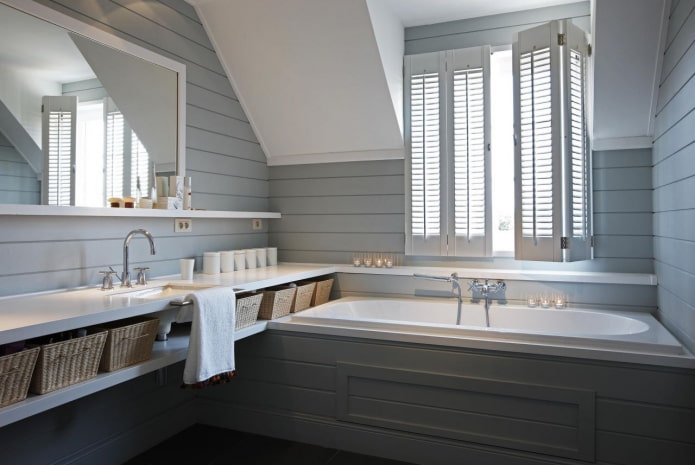

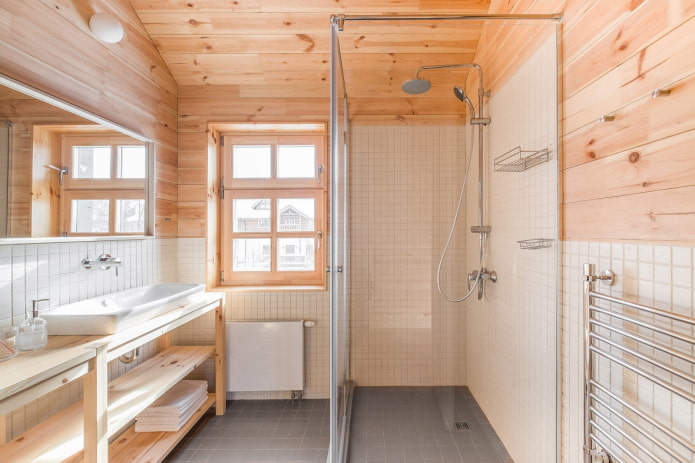
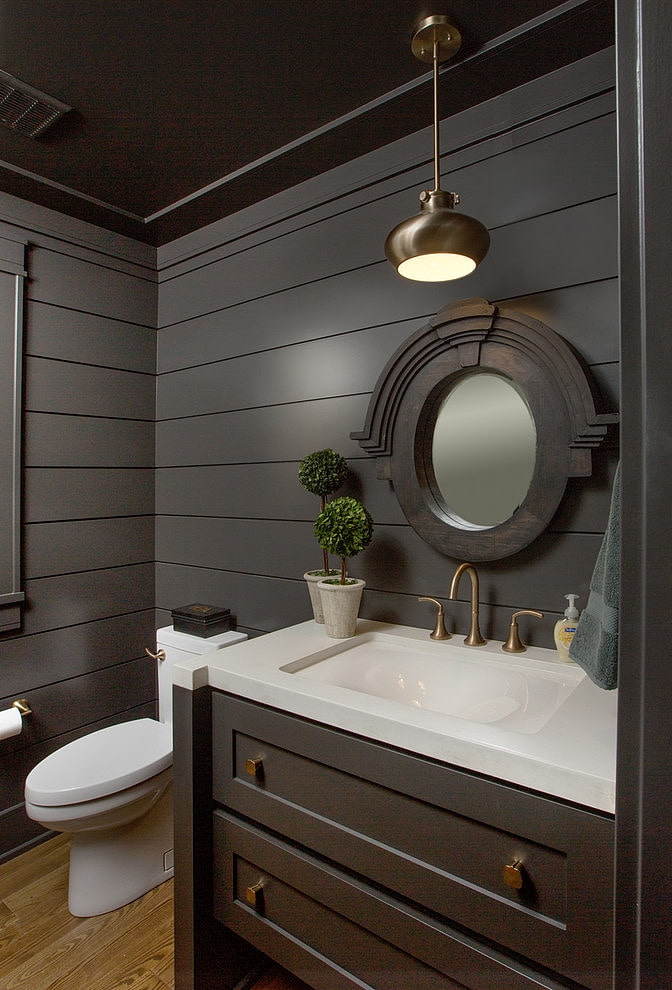
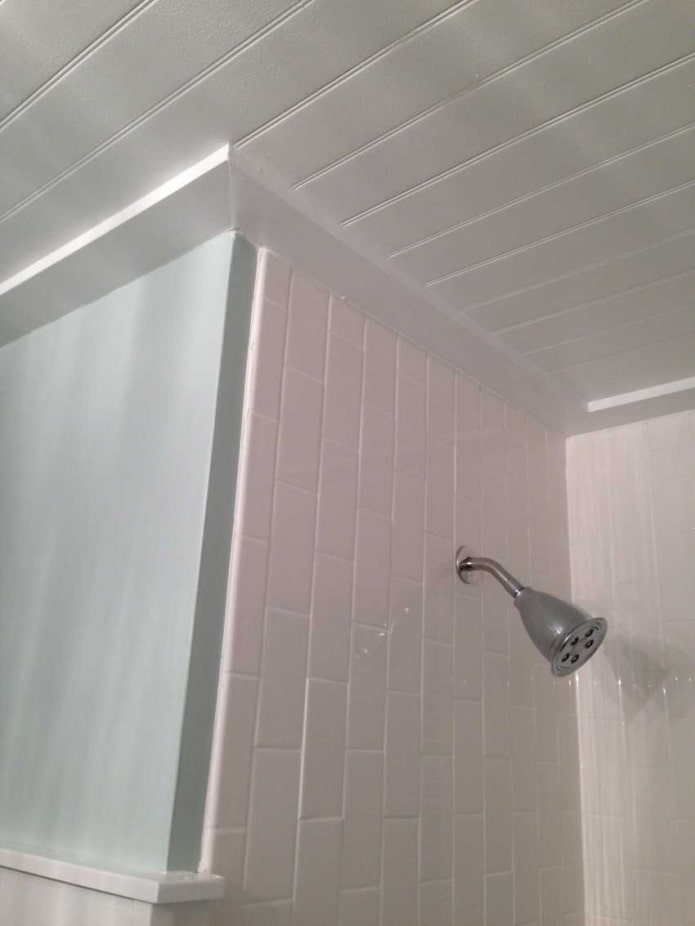
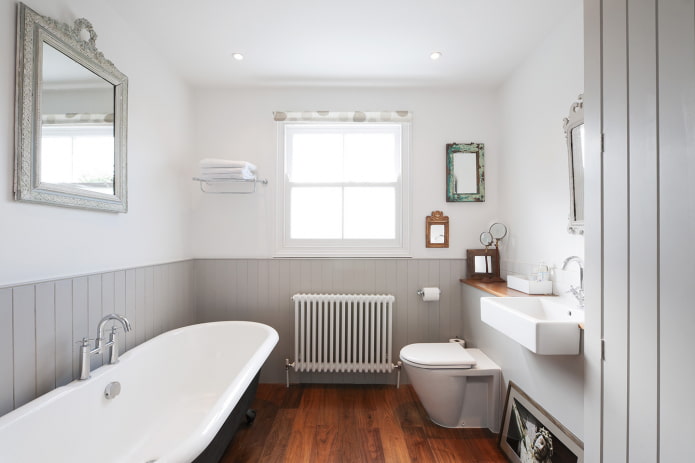
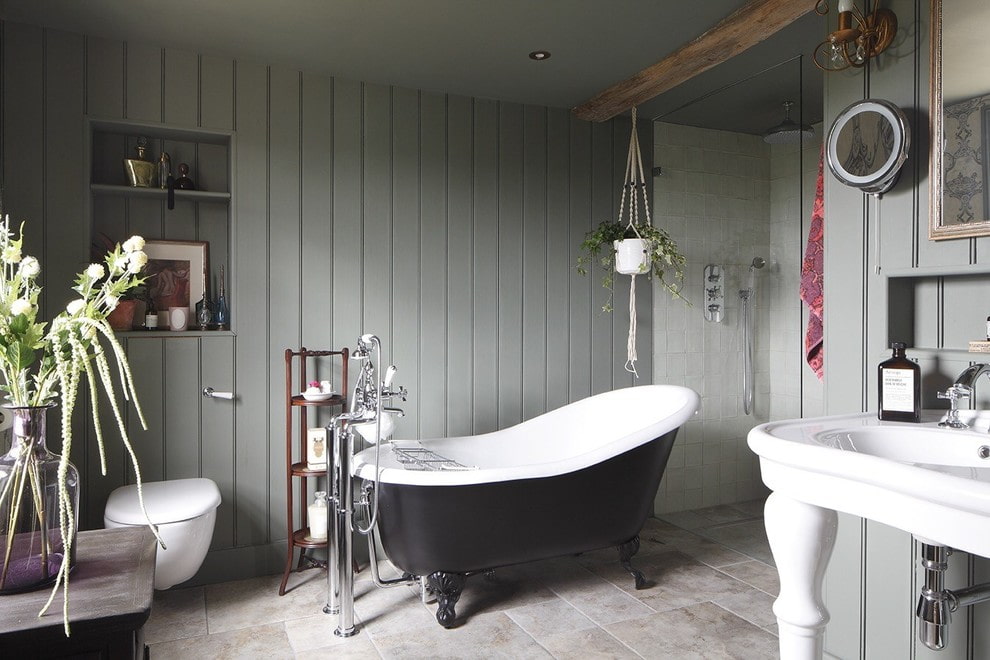

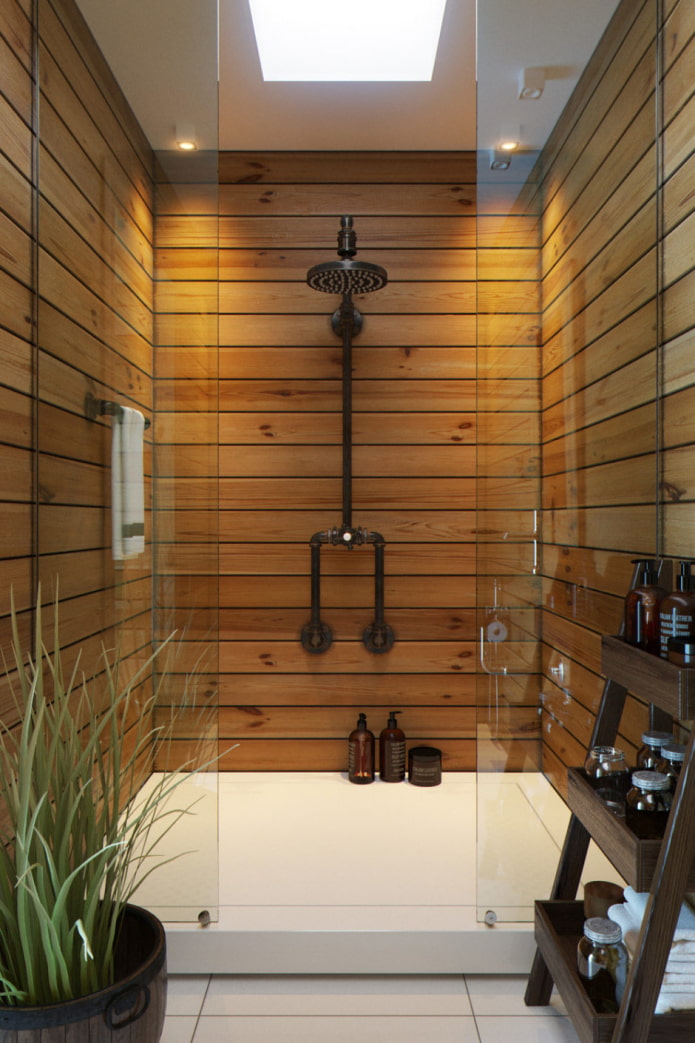
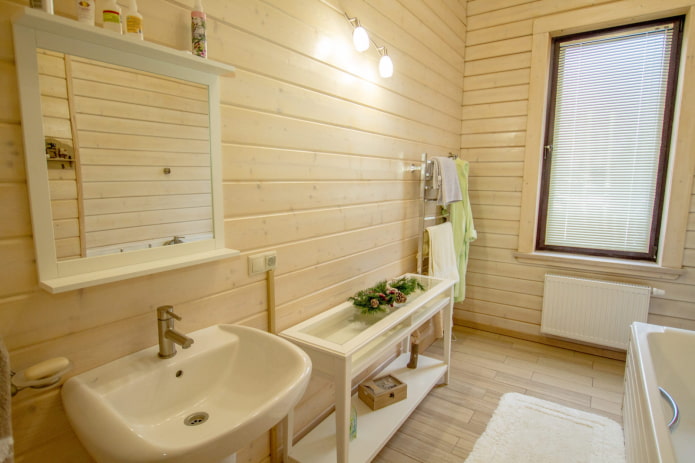
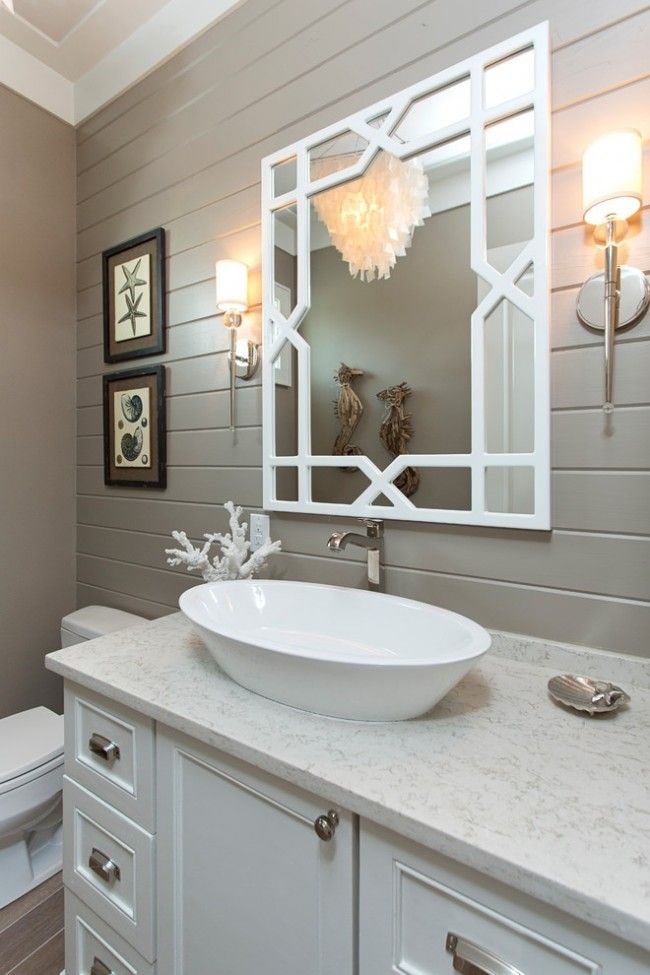
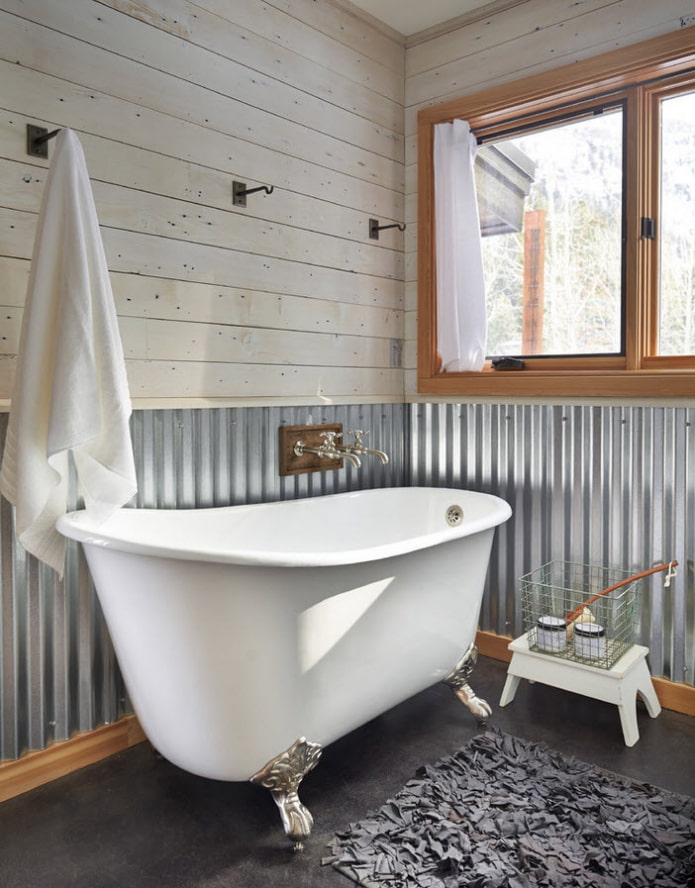
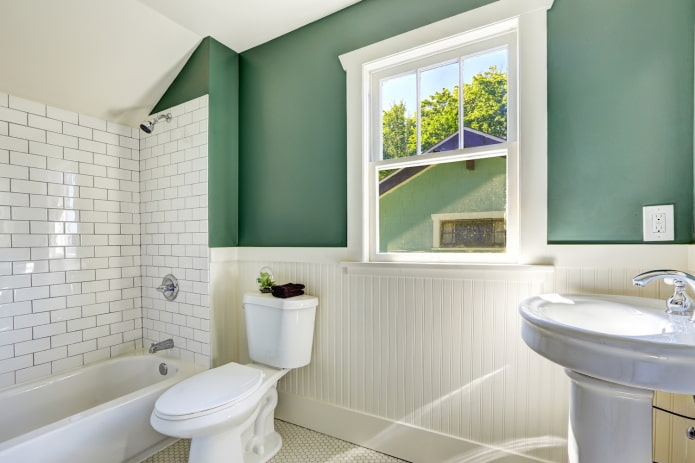
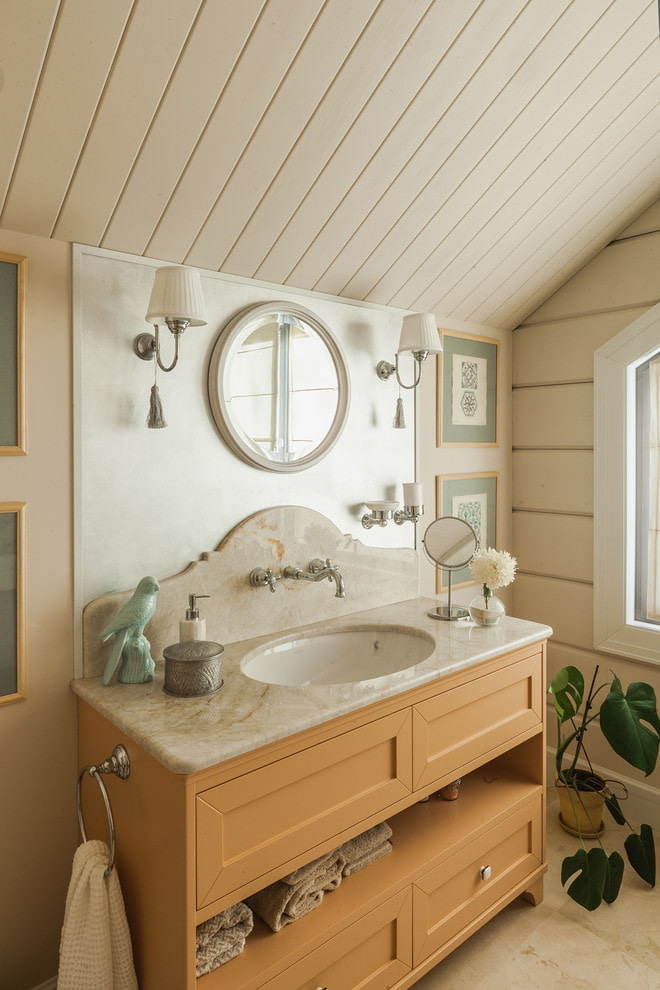
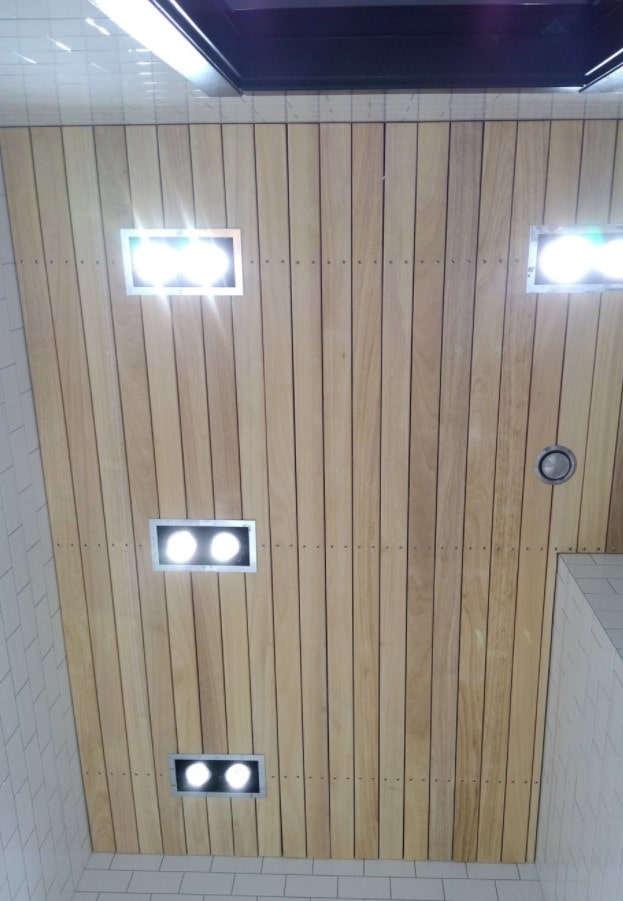
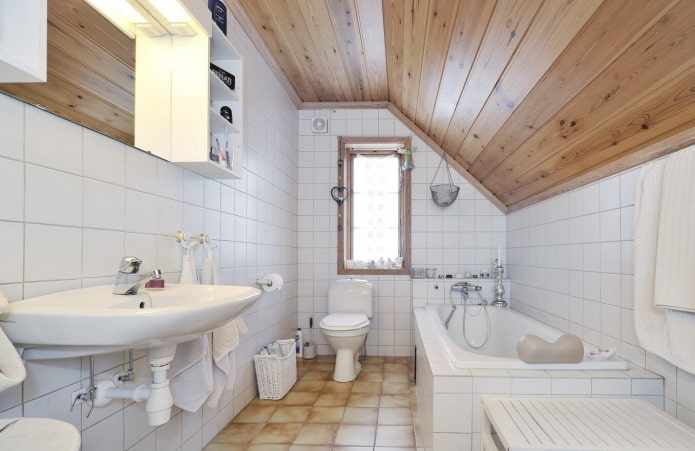
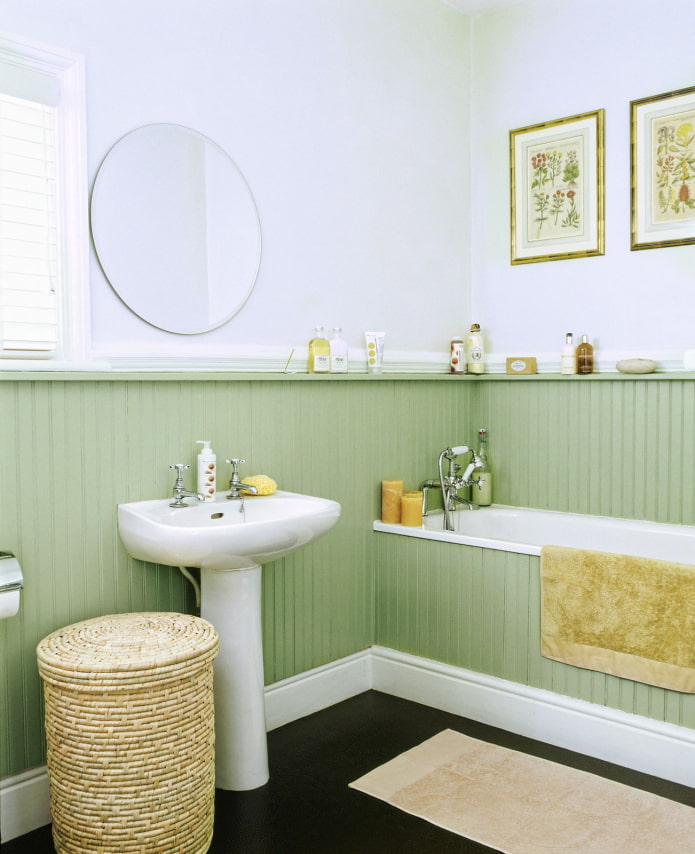
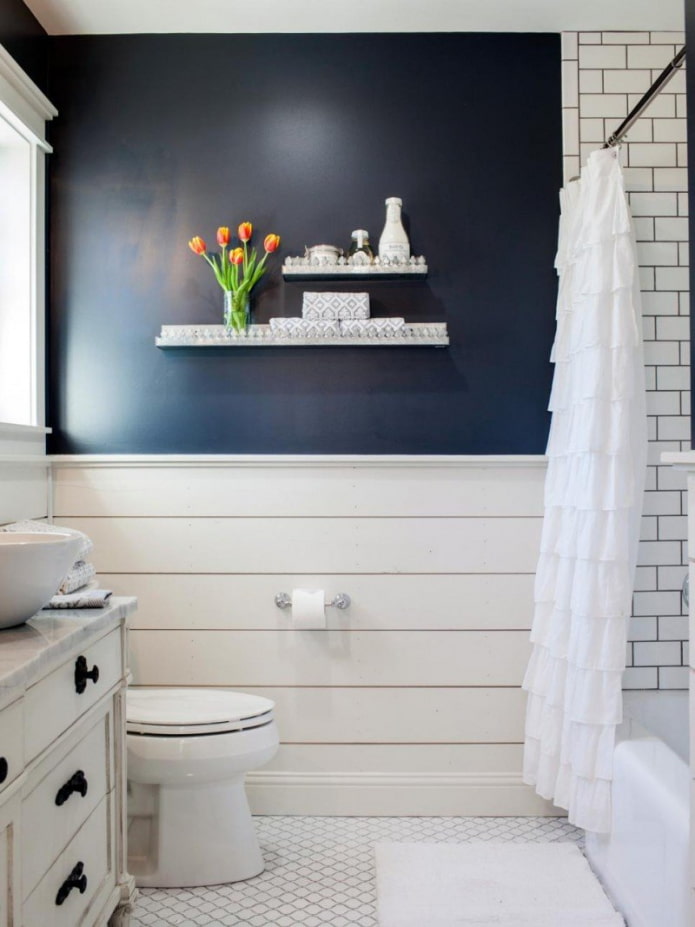
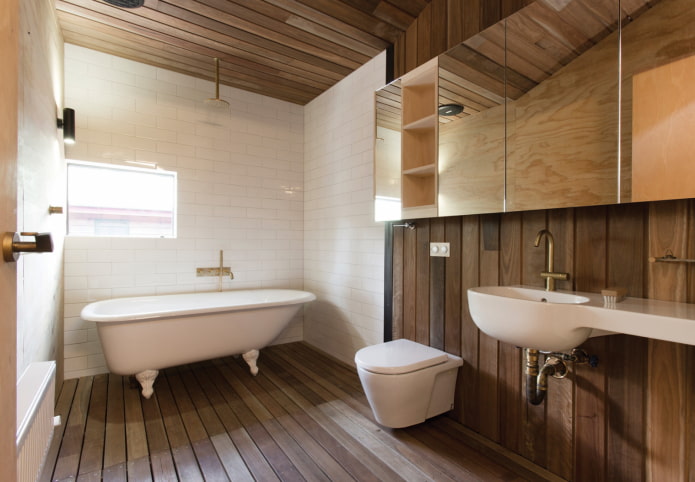
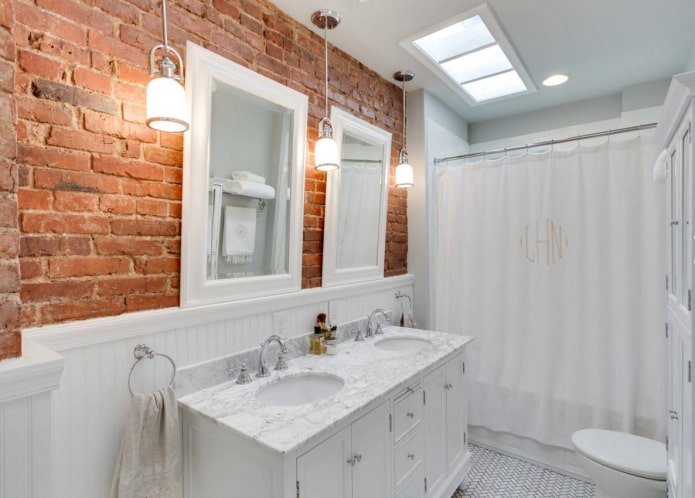
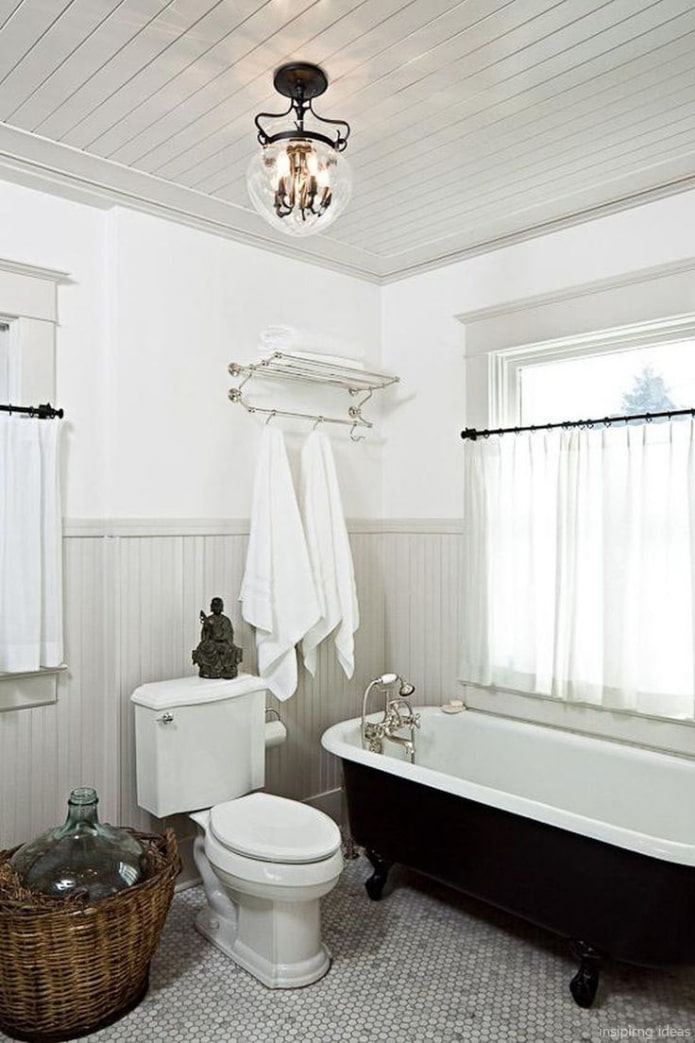
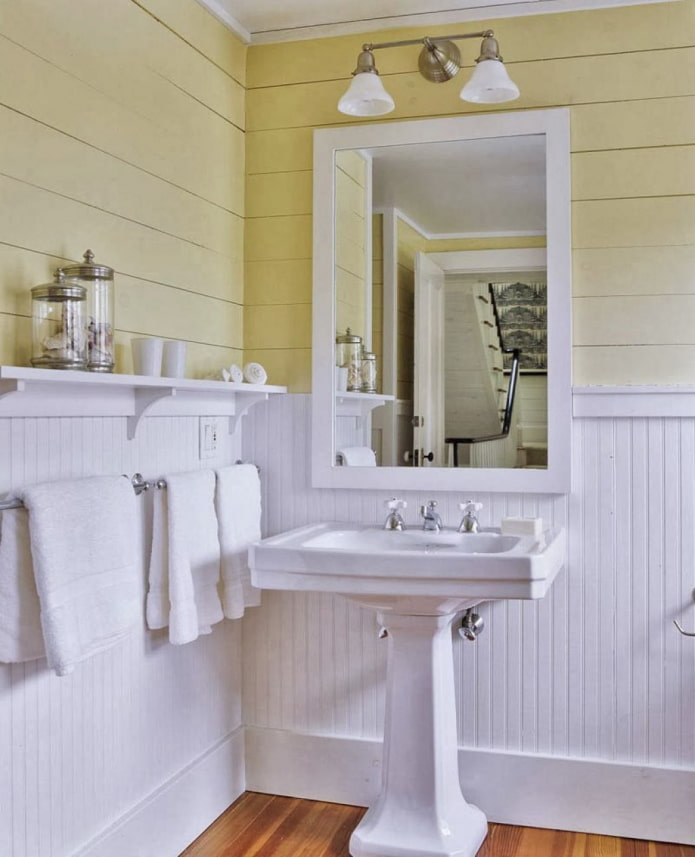
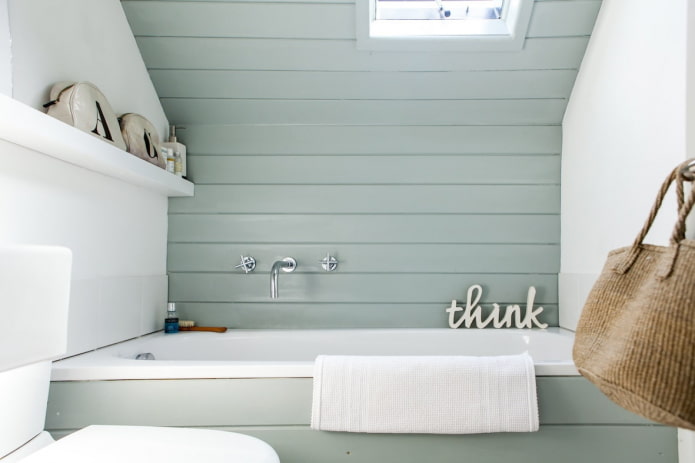


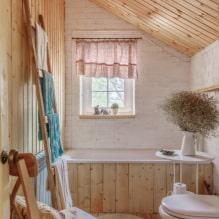
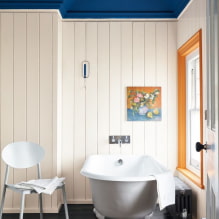

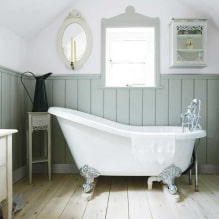
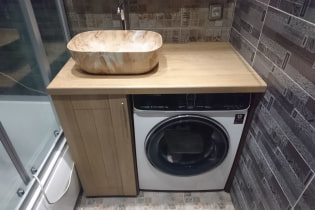 How to position the washing machine in a small bathroom?
How to position the washing machine in a small bathroom?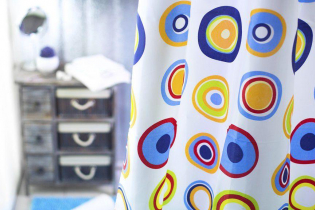 How to remove plaque from the bathroom curtain?
How to remove plaque from the bathroom curtain?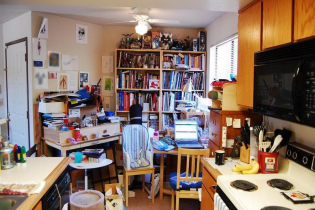 7 common mistakes in small apartment renovation that eat up all the space
7 common mistakes in small apartment renovation that eat up all the space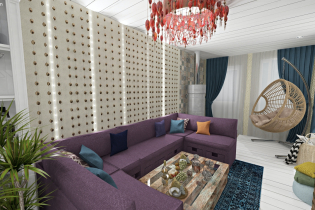 Apartment layout: how not to be mistaken?
Apartment layout: how not to be mistaken?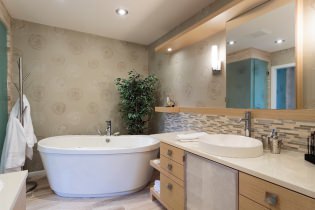 Wallpaper for the bathroom: pros and cons, types, design, 70 photos in the interior
Wallpaper for the bathroom: pros and cons, types, design, 70 photos in the interior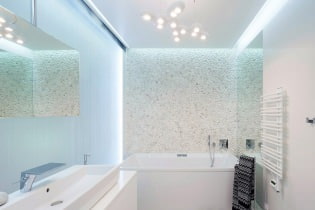 Modern bathroom interior: 60 best photos and design ideas
Modern bathroom interior: 60 best photos and design ideas